16.7.9.Configuration of Delete job in Teams chat archive
This job type deletes the expired messages (with attachments, all versions), removes the text entries which are no longer used, and removes the indexed documents from all members who are indexed with expired retention time from the archive.
Go to Jobs -> click on +new -> and select Delete from Teams chat archive job.
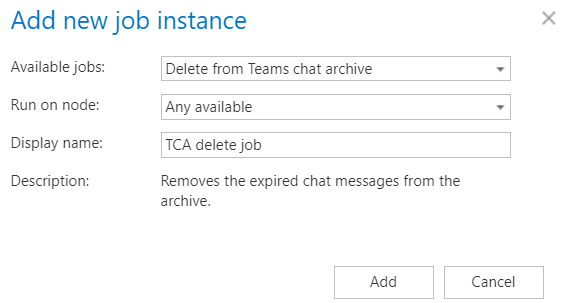
On the job’s configuration page, go through the following sections:
✓ Running mode settings (mandatory)
The job can be run in 3 modes:
- 1. Immediate processing – collects the expired items and deletes them immediately.
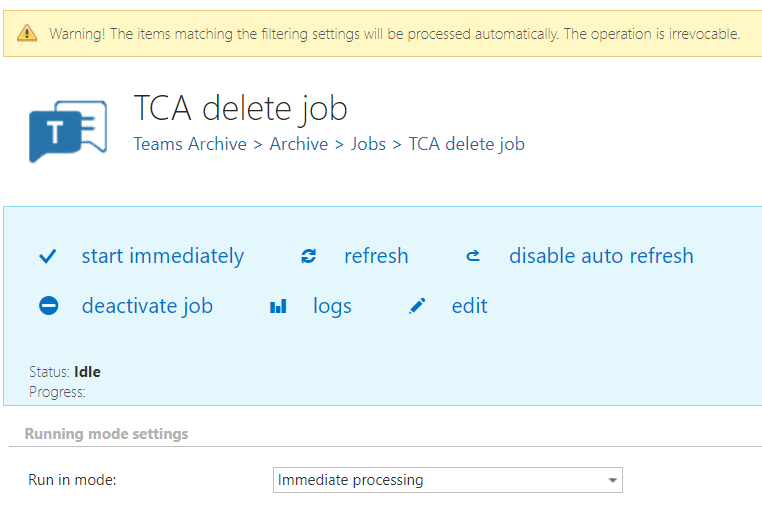
- 2. Create report – collects the expired chat messages and provides a CSV file with a list of chats and messages. The administrator can delete messages from the list.

- 3. Apply report – a CSV file with a list of items to be deleted must be uploaded. The administrator can delete items from the list before running the job (only items in the list will be processed). The job reads the list and deletes them if the messages are expired.
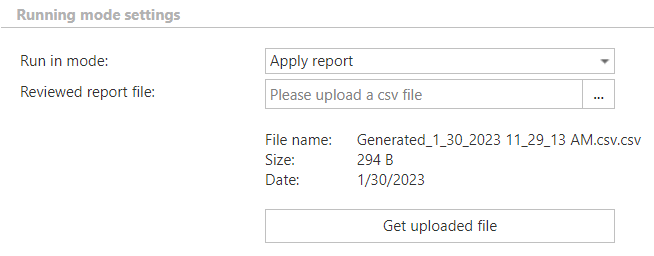
✓ Scheduling settings (mandatory)
In this section, the running times of the Delete job must be selected. It is possible either to select a scheduler from the list or create a new scheduler via the “Create new…” option.

✓ Processing settings (optional)
Here, you may check the Delete even if not marked for delete checkbox. If you do so, the Delete job will delete expired item(s) without them needing to be marked for delete (in the Portal). You can find more information about the Mark for delete function here.

✓ Address book objects to process (mandatory)
In this section, the user must select the user(s) who will be processed. There are two available options for how the list of the user(s) may be specified:
- a) Process All users – – in this case, the job will delete the items from all previously provisioned and archived user’s chats.

- b) Process Selected users – in this case, the users may be added via select option, and they must be added manually, one-by-one. Click on select to open the User and group selection dialog.
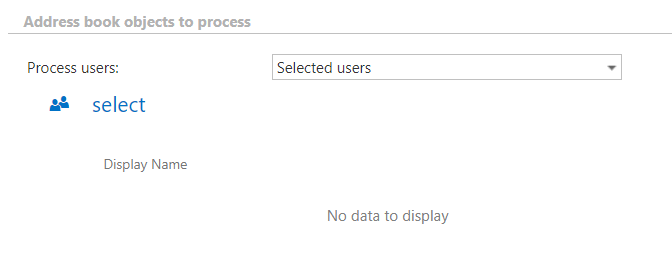
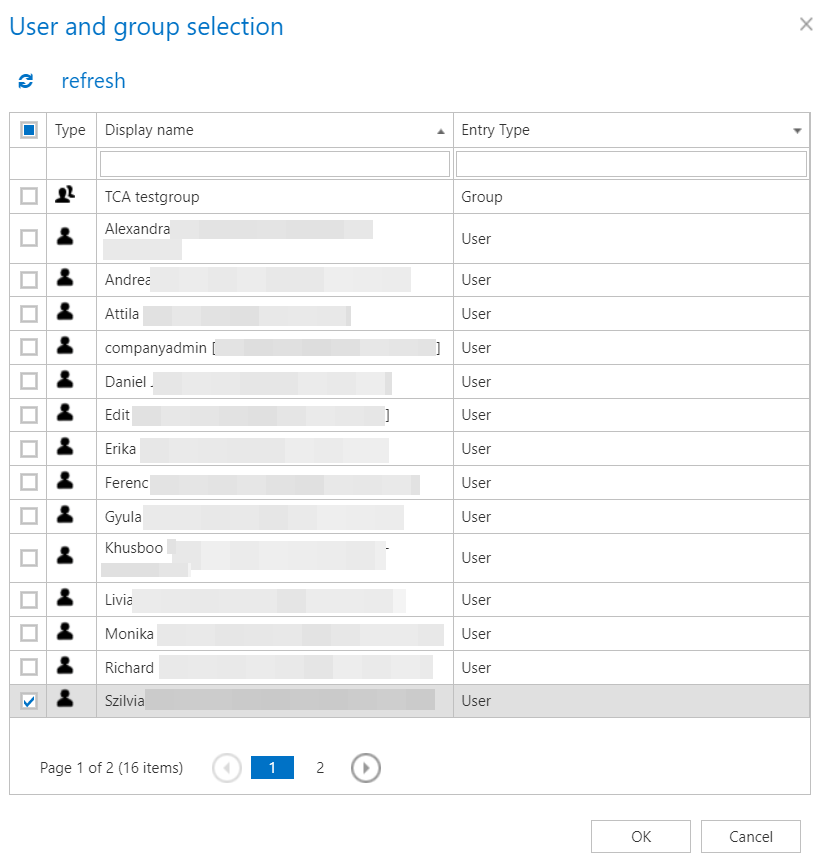
✓ Filtering settings (optional)
The user can define which chats and messages (of the selected users) will be processed during the delete job.
Without filters, the job will process all chats and messages for the selected user(s).
To set the filtering settings, click on the Change filter or not set button, and set the filtering according to your needs and (or) regulations. To learn more about how to work with the filtering settings, refer to this section of our documentation.

- Chat filtering – the chats can be filtered out based on the following conditions:

- Message filtering – the messages can be filtered out based on the following conditions:
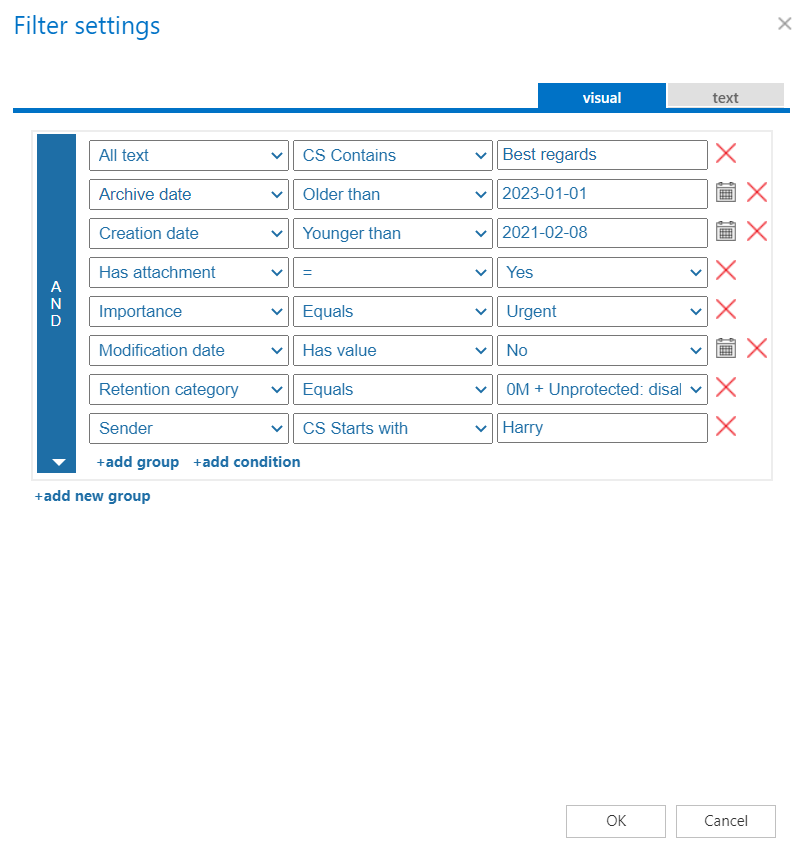
✓ Notification settings (mandatory)
Select here when you will need to get notification emails from the Delete job. It is possible to set here if you need a notification email always/never, or you need it only if an error/warning occurred during the process – for example, if the deletion of one or more items failed, then you may get a notification email about this error. Into the Recipients list textbox insert the email addresses of the people to whom you would like to send these emails – if there are multiple recipients, then addresses must be separated by “,”, or “;”.

✓Resource settings (mandatory)
Set the value, which will determine how many items will be processed simultaneously by the Delete job. The recommended value is 2, as in our case.

In the end, never forget to save your job configurations: click on Save in the left upper corner of the UI. After you saved the configuration, the job can be started by clicking on the “Start immediately” button.
